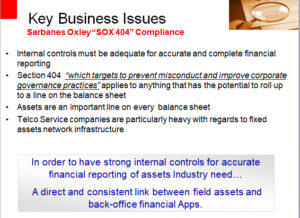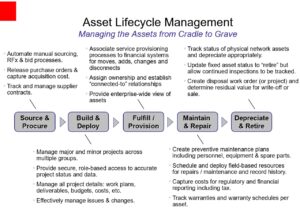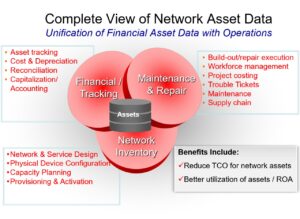Business Process Management
Do you own a business and want to make sure its processes are as efficient as possible? Are you looking for ways to increase your company’s performance and profitability? If so, then our Business Process Value Stream Mapping service is perfect for you! Read on to learn more about this innovative service and how it can help your business reach its maximum potential.

Introducing Value Stream Mapping Workshop
At our company, we offer a Value Stream Mapping service that helps companies understand their current business processes and identify areas of waste. This workshop provides an overview of the Value Stream Mapping technique and helps you to identify areas of value, waste, and improvement. By completing the workshop, you will have a better understanding of how to analyze a Value Stream Map and how to maximize value for your customers through Value Stream Mapping. We hope you join us for this introductory workshop!
The Journey to Creating a Value Stream Map
At our company, we provide Business Process Value Stream Mapping service. This workshop provides participants with an overview of the value stream mapping methodology, tools, and benefits. The goal of VSM is to remove ‘waste’ and make complex processes more efficient. By following the steps outlined in this workshop, participants will be able to identify areas of value, waste, and improvement in their business processes. Additionally, they will be able to understand existing business processes and how to use VSM to maximize value for their customers.
This workshop is designed for process professionals, such as software developers, systems analysts, and information technology managers. If you are interested in learning more about value stream mapping and how it can help your business, register today.
Identifying Areas of Value, Waste, and Improvement
Value stream mapping is alean manufacturing orlean enterprise technique used to document, analyze and improve the flow of information or
Lean value stream mapping is a tool for helping your business reduce waste.
Learn what value stream mapping is and how to
Maximizing Value for Customers Through Value Stream Mapping
Using Value Stream Mapping to Eliminate Inefficiencies
Understanding Existing Business Processes
In our company, we provide Business Process Value Stream Mapping service. This workshop will introduce you to the value stream mapping methodology and provide an overview of the benefits that it can provide your business. We will also discuss how to identify areas of value, waste, and improvement in your process. Finally, we will discuss how to use value stream mapping to maximize the value for your customers. You will leave this workshop with an understanding of how to use value stream mapping to improve efficiency and effectiveness within your business.
The Benefits of Value Stream Mapping
Value stream mapping is a powerful tool that can be used to improve business processes and deliver more value to customers. By understanding existing processes and identifying areas of waste, you can eliminate inefficient parts of the process and create a more streamlined customer experience.
Value stream mapping has many benefits, including the following:
-Eliminates inefficient parts of the process
-Reduces cycle times
-Creates a clear visual picture of the process
-Helps you to identify areas of improvement
-Provides a community for process professionals to share ideas and learn from each other.
There are many benefits to value stream mapping, and by using it in your business you can achieve tremendous success. If you’re interested in learning more about value stream mapping, or want to find a provider who can help you optimize your process, be sure to check out our website.
How to Analyze a Value Stream Map
When it comes to optimizing a process, value stream mapping is a valuable tool. The goal of value stream mapping is to identify and reduce the waste that exists throughout a product or service delivery process. To do this, a visual map of the entire process must be created. This map will show the steps involved in delivering a product or service, as well as the data that is associated with each step. Once the map is complete, it can be used to identify areas of improvement and waste.
In order to analyze a value stream map, it is first necessary to understand how it works. Value stream maps are composed of three main components: value, waste, and improvement. Each of these elements must be represented in order for the map to be complete. The value section is where all the benefits of the product or service are placed. The waste section will show areas where unnecessary or wasted materials are located, and the improvement section will show areas where improvements can be made.
Once the map is complete, it can be used to identify areas of improvement and waste. For example, if a value stream map reveals that a step in the process is causing a lot of waste, then it may be worthwhile to redesign the step or move it to a different part of the process. Alternatively, if an area on the map shows high levels of improvement potential, then changes may need to be made to the process in order to achieve those results.
Overall, value stream mapping is an incredibly valuable tool for improving the processes within a company. By using this method, unwanted waste can be identified and eliminated, which will lead to improved customer satisfaction. If you’re interested in learning more about value stream mapping, or would like to find out how we can help your business achieve optimal results, please contact us. We would be happy to discuss your specific needs and provide you with a detailed evaluation of our services.
A Community for Process Professionals
Process professionals (e.g. process engineers, process managers, process consultants) often find themselves in need of assistance in order to improve their businesses. With the help of Value Stream Mapping, these professionals can easily visualize the flow of materials and information within their company, and identify areas of waste. Additionally, Value Stream Mapping can help optimize processes and eliminate inefficiencies. By joining the Process Professionals community on ARIS, process professionals can connect with other professionals and exchange ideas and tips. In this way, everyone can benefit from the improvements that Value Stream Mapping can bring to their businesses.
Maximizing Value for Customers Through Value Stream Mapping
At our company, we provide a Business Process Value Stream Mapping service that can help organizations identify areas of value, waste, and improvement. By understanding these areas, companies can create a more efficient and productive process. We recommend that you attend one of our upcoming workshops to learn more about Value Stream Mapping. We look forward to helping you achieve your goals!
Using Value Stream Mapping to Eliminate Inefficiencies
If you’re looking to improve your business processes and eliminate waste, value stream mapping may be the tool for you. This lean manufacturing technique allows you to create a visual map of the end-to-end process of a product or service, identifying areas of value, waste, and improvement. By following the provided steps and using the data contained in a value stream map, you can streamline your business and ensure that your customers receive the best possible value. We offer a workshop on value stream mapping that will help you learn how to use the technique and improve your business processes. Register today!
Understanding Existing Business Processes
When it comes to understanding an organization’s existing business processes, process mapping can be a valuable tool. Process mapping helps teams understand their processes at a deeper level so that they can identify areas of waste and value. By mapping out the steps involved in each process, teams can identify where they can add value and minimize waste. Additionally, process mapping can help identify customer outcomes and create cost savings.
The benefits of process mapping are numerous and extend beyond the organization itself. By helping an organization’s stakeholders understand their roles and responsibilities in the overall process, process mapping can help to increase communication and collaboration. Additionally, process mapping can help to identify potential problems early on and prevent them from becoming larger issues.
If you’re looking to improve your organization’s performance in any way, process mapping is an ideal tool for you. To get started, contact us today to schedule a workshop. We’d be happy to teach you everything you need to know about this powerful tool.
Are you looking for a way to measure the success of your team and organization? Are you trying to identify key performance indicators (KPIs)? Do you want to know the critical success factors that will help you reach your goals? If so, then this blog post is for you! We’ll discuss the importance of KPIs and Critical Success Factors and how they can be used in your company.

What are Critical Success Factors (CSFs)?
Critical success factors (CSFs) are high-level goals that your organization must meet in order to achieve your strategic objectives. In order to understand what a CSF is, it is helpful to first understand what a key performance indicator (KPI) is. A KPI is a specific criterion that helps you measure and track the progress of your organization’s objectives.
While CSFs are actions your business must take in order to be successful, KPIs are indicators of how well your organization is performing on specific goals. For example, you might have a CSF that states your organization must achieve a certain number of new members each month, while the KPI for this would be the number of new members your organization registers each month.
It is important to keep in mind that CSFs and KPIs are not mutually exclusive; rather, they work together to help you achieve your organization’s objectives. For example, if you have a CSF that states your organization must register new members each month, but you are not currently registering any new members, it would make sense to set up a KPI that measures the number of new members your organization registers each month.
What are Key Performance Indicators (KPIs)?
Key performance indicators (KPIs) are important business metrics used by corporate executives and other managers to track and analyze factors deemed crucial to the success of a company.
There are a few different types of KPIs, each of which has its own benefits and uses. Some of the most common types of KPIs include financial indicators, such as profits and revenue, and operational indicators, such as employee productivity or customer satisfaction.
The importance of using KPIs can’t be overstated; without them, it’s difficult to know whether a business is making progress or not. In addition to helping to track progress, using KPIs can also help identify areas in which a company needs improvement. By systematically monitoring these indicators, businesses can ensure that they’re constantly moving in the right direction.
How Do CSFs and KPIs Differ?
CSFs and KPIs differ in a number of ways, the most important of which is that CSFs are designed to provide a holistic view of an organisation’s performance, while KPIs are focused on specific goals and metrics. Additionally, CSFs are typically longer-term measures that encompass the entire organisation, while KPIs are more tactical and specific. Finally, CSFs are typically more holistic in nature and are not limited to just one area of an organisation’s performance, while KPIs are typically more specific in nature.
All of these differences mean that CSFs and KPIs can be used in different ways to help achieve business goals. For example, CSFs can be used to assess an organisation’s overall performance and make strategic decisions, while KPIs can be used to track individual goals and measure progress. In addition, CSFs can help to identify areas where improvement is needed, while KPIs can help to identify areas where performance is meeting or exceeding expectations.
Who Pioneered CSFs and KPIs?
The concept of critical success factors (CSFs) and key performance indicators (KPIs) was first pioneered by John F. Rockart in the late 1990s. Rockart, of MIT’s Sloan School of Management, built on and popularized the concept almost two decades later. He defined CSFs as: “The limited number of factors that, when achieved, result in a successful outcome.” In other words, CSFs are a prioritized list of factors that are essential for achieving success in a given area.
While KPIs are often thought of as simple indicators of success, they are in fact much more than that. KPIs can be used to track progress and identify areas where improvement is needed, which can then be addressed through the implementation of CSFs.
CSFs and KPIs are vital for businesses of all sizes because they allow management to see the company or department performance in a clear and concise way. This information can then be used to make strategic decisions and ensure that the business is on track towards its goals.
CSFs and KPIs can also help businesses achieve their daily activities more efficiently. By setting specific goals and measuring how well the company is progressing towards those goals, it becomes much easier to stay on track and reach your objectives.
What Metrics are Used in Conjunction with KPIs?
KPIs and CSFs are two common types of metrics that are used in conjunction with one another. KPIs are the elements of your plan that express what you want to achieve by when. They are the quantifiable, measurable measures that gauge a company’s performance against a set of targets, objectives, or industry peers. CSFs, on the other hand, are actions that a company takes to achieve its goals. They are usually shorter-term objectives that are developed based on the company’s critical success factors. Both KPIs and CSFs are important in helping a business achieve success.
CSFs and KPIs can be used interchangeably because they both refer to goals that are tracked and measured. However, there is a main difference between the two. A KPI is simply a metric that is tied to a target to determine if we have achieved our goal. For example, you might have a goal of making $10,000 in sales within the next month. You would then measure your progress against this target by calculating your sales for the month. CSFs, on the other hand, are developed based on the company’s critical success factors. These factors might be things like customer satisfaction, profitability, and employee retention. In order to achieve these factors, the company might take specific actions (like increasing customer satisfaction rates) each month.
CSFs and KPIs can help a business achieve success in many ways. For example, they can help you get a better understanding of where you stand and what you need to do to improve your performance. They can also help you set short-term and long-term goals that are realistic and achievable. Finally, they can help you track your progress and ensure that you are taking the right actions to reach your objectives.
How to Use CSFs and KPIs for Goal Achievement?
CSFs and KPIs are two important tools that can help businesses achieve their goals. By using CSFs and KPIs, businesses can focus on the key actions that will help them succeed. CSFs are actions that a business takes to achieve its objectives; while KPIs are measures used to quantify the performance of these actions.
When designing a CSF, you must first decide what is important to the organisation. After you have identified these priorities, you must put them into action. For example, in our company, we focus on membership website conversion rates. This is a key action that we take to achieve our business objectives.
KPIs can be used in a number of ways to help your business achieve its goals. For example, you could use them to track the progress of your products or services. You could also use them to measure the performance of your employees. In addition, KPIs can be used to measure customer satisfaction.
What Does it Mean to Have a KPI or CSF in a Business Context?
In order to effectively manage and monitor business performance, it is essential to have a good understanding of the concept of Critical Success Factors (CSFs) and Key Performance Indicators (KPIs). CSFs are high-level goals that your organization must meet in order to achieve your strategic objectives, while KPIs are measures of performance that can be used to track progress.
CSFs and KPIs are closely connected and can be used together to measure business objectives. CSFs help you identify the areas in which results, if they are satisfactory, will ensure successful competitive performance for the organization. KPIs, on the other hand, are measures of performance that can be used to track progress. They can be used to monitor specific areas of performance and measure whether objectives are being met.
How Can KPIs and CSFs Help Your Business?
KPI and CSF are important tools that can help a business achieve its goals. They can help you to measure the performance of certain aspects of your business and to make changes to your operation as needed.
CSFs are pre-performance check while KPIs are post-performance check.
Both CSF and KPIs are quite common concepts in the business world.
In this article, we explore how to identify your CSFs, how they should relate to your business objectives, and how they differ from Key Performance Indicators (KPIs). We also discuss how to use CSFs and KPIs for goal achievement.
Finally, we look at what it means to have a KPI or CSF in a business context. We also discuss how KPIs and CSFs can help your business.
Are you looking for ways to improve your business processes? Do you need assistance with process design or redesign? If so, then this blog post is for you! We’ll discuss the latest trends in process design and how our company can help make your processes more efficient.

Introduction to Process Design & Redesign
Process design and redesign is an important process that every company should undergo. In today’s economy, it is important to have processes in place that help to streamline operations and ensure that products and services meet customer expectations. Our company provides process design and redesign services that help companies adapt their processes to meet the demands of the modern market. We offer our services to help companies improve their culture, product quality, service delivery, and overall efficiency. Contact us today to learn more about our process design and redesign services!
ReCulturing: Evolving Practices That Shape a Company Culture
In today’s business world, companies must constantly evolve their practices in order to stay ahead of the competition. This is especially true for companies that focus on customer service or manufacturing.
ReCulturing is the continuous act of redesigning and reconnecting behaviors, processes, and practices to each other and to the company’s overall mission and strategy. By following these six design steps, leaders can model the impact of culture on their business and assess its alignment with strategy.
In today’s world, it is essential for companies to understand customer experience and how service design can be used to improve it. Knowledge management is also becoming more and more important as businesses strive to extract value from their processes. Finally, streamlining the manufacturing cycle is necessary for companies who want to reduce costs while still meeting customer demands.
Six Design Steps to Business Process Design
1. Define the problem or need that the process is intended to solve.
2. Create a conceptual model of the process.
3. Identify and define the roles and responsibilities of all involved parties.
4. Identify the interfaces between the various parts of the process.
5. Select the best technology for implementing the process.
6. Train and manage the people who will use the process.
Ten Key Elements to Evaluate Before Redesigning a Company
There are a few key elements that must be evaluated before any redesign effort can be started. These elements include the company’s mission, goals, and objectives; the customer base; the company’s current processes; and the potential impact of the redesign on the business. It is important to keep these elements in mind as you begin your design process, as they will have a significant impact on the end result.
When designing a company’s website, it is important to consider how the site will be used. For example, is the site primarily used for marketing purposes, or does it serve as a customer service center? In order to design a website that meets the needs of all users, it is important to understand customer segments and their needs.
Another key element to consider when redesigning a company’s website is its processes. Are the processes currently implemented efficiently and effectively? If not, how can they be improved? It is also important to consider potential impacts of the redesign on the business. For example, will implementing new processes reduce costs or increase profits? By taking these factors into account early in the design process, designers can create a website that meets the needs of both the company and its customers.
Evaluating a company’s website before redesigning it is essential for success in designing a successful website. By following these ten key steps, designers can ensure that their company’s website meets customer needs and achieves its goals.
Understanding Customer Experience Through Service Design
Service design is a framework that helps organisations deliver better customer experiences. It helps companies understand the customer journey and interactions over time, and extract key insights that drive business outcomes. By understanding the customer journey and customer value, service designers can create to-be processes that support strategic goals while reducing costs and improving efficiencies.
Service design helps organisations understand their customers and their needs, which in turn drives better business outcomes. By designing to-be processes that meet customer needs, service designers improve the overall customer experience. This in turn creates a win-win situation for the customer, the company, and the employees who work within it.
The Benefits of Knowledge Management in Process Redesign
As process redesign becomes increasingly important in today’s business world, it is important to consider the benefits of knowledge management. By implementing knowledge management strategies into your process redesign, you can improve your organization’s overall efficiency and productivity.
There are several reasons why knowledge management is beneficial to process redesign. First, it allows you to manage and share information effectively. This allows teams to work together more effectively and makes it easier for everyone to understand the process. Second, it allows you to track and manage changes in the process. This helps you to make sure that the process is running smoothly and that everyone is following the correct steps. Third, it enables you to monitor and measure the effectiveness of the process. Finally, it helps you to identify and solve problems early on in the process.
By taking advantage of knowledge management strategies during your process redesign, you can achieve many benefits for your organization.
Extracting from the Process to Streamline the Manufacturing Cycle
Process redesign is important for businesses of all sizes to improve their efficiency and streamline their operations. One of the most important ways to do this is to extract information from the process and use it to improve the performance of the manufacturing cycle. By understanding customer needs, creating to-be processes, and monitoring results, companies can achieve significant improvements in their efficiency.
Methods for Creating To-Be Processes
Methods for creating to-be processes can be a helpful tool for businesses, as they can help you to stay aligned with the right goals and improve efficiency. Some of the most common methods include process mapping, process simulation, and business process modeling. By using these methods, you can create a detailed picture of a company’s current processes and identify potential improvements. In addition, by understanding customer experience through service design, you can improve the customer experience throughout the entire process. Finally, by extracting information from the process, you can streamline the manufacturing cycle. By using these methods and taking advantage of today’s technologies, you can create a process design that is tailored to your business needs.
How to Navigate Through Real Customer Value and Cost Efficiencies
When redesigning a business process, it is important to consider the customer’s perspective. By understanding how customers interact with the process, it is possible to create products and services that meet their needs and expectations. To do this, it is important to navigate through real customer value and cost efficiencies.
To navigate through real customer value, it is important to first understand the customer’s needs. Once the needs are identified, it is possible to create products and services that meet those needs. To do this, it is important to understand the customer’s wants and needs. To do this, it is important to collect feedback from customers throughout the process.
To navigate through cost efficiencies, it is important to identify all of the costs associated with the process. Once the costs are identified, it is possible to identify ways to reduce those costs. By doing this, it is possible to create a process that is both efficient and affordable for the company.

















